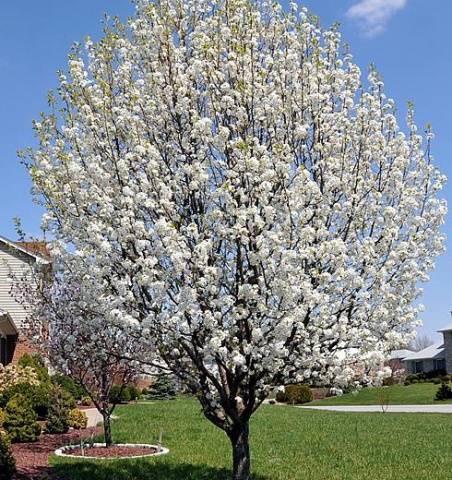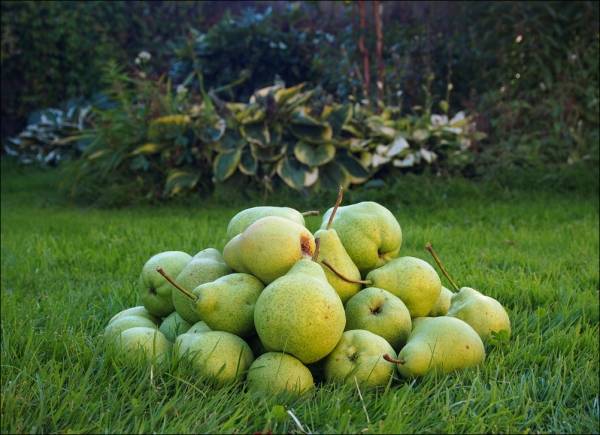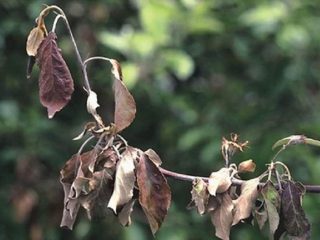Content
The pear has been known to man for several thousand years. Georgia is considered its homeland, from where the fruit tree spread throughout the planet. Today, thanks to the efforts of breeders, there are about 5,000 different varieties of pears in nature. With such a wide variety, it is not at all easy to choose a good plant for your garden, with certain characteristics.
When exploring the variety of options, gardeners rely on reviews and comments from experienced farmers. According to most of them, the August Dew variety deserves attention and can be recommended for cultivation in the central and southern regions of the country. This variety has earned wide popularity due to its numerous advantages and excellent characteristics of the fruit. Thus, a detailed description, photos and reviews of the “August Dew” pear variety can be found further in the proposed article.
Detailed description of culture
The “August Dew” pear is the brainchild of the Russian breeder S.P. Yakovlev. It was he who crossed the cold-resistant and unpretentious variety “Tenderness” with the delicious Australian pear “Triumph Pakgama” in the early 2000s.As a result of the work carried out, the wonderful variety “August Dew” appeared, which absorbed the best qualities of its ancestors. The variety was appreciated by breeders and zoned in 2002 for the Central Black Earth region of Russia. The August Dew pear quickly became popular among gardeners. It can be found in many private farmsteads and gardening farms. The variety is still in demand today.
Features of a fruit tree
Among all fruit trees, the August Dew pear is distinguished by its grace and sophistication. It can become a real decoration of the garden. The tree, up to 3 m high, has a drooping crown and is of medium density. Through the numerous dark green ovoid leaves, straight branches covered with smooth, light gray bark are visible. The branches of the plant are located at an acute angle to the main trunk, resulting in the formation of a neat and beautiful green “cap”.
In spring, pear trees bloom profusely. Numerous inflorescences consist of 7-10 simple, fairly small flowers, white in color. As a result of prolonged flowering, ovaries are formed on curved peduncles. Their number directly depends on external conditions, the presence of pollinators and weather. You can see the “August Dew” pear during the flowering period in the photo below:
The August Dew variety quickly grows numerous skeletal branches and shoots. In spring, the buds on the tree actively awaken. Under favorable conditions and the presence of a pollinator, most flowers form ovaries, which is the basis for obtaining high yields.
A feature of the “Augustovskaya” pear is its low level of self-fertility.Therefore, when planting this variety, you need to take care of growing another pollinating pear nearby. The best pollinator for “August dew” is considered to be the variety “In memory of Yakovlev" As a rule, when buying seedlings at a nursery, you can easily find both of these varieties.
Characteristics of fruits
Of course, every gardener is more interested not in the fruit tree itself, but in the result of its cultivation - pears, their shape, color and taste. In this sense, the “August Dew” pear has a clear advantage over other varieties. Its fruits are large and juicy. Their average weight is 100-150 g. In favorable conditions, the weight of the fruit can reach a record 200 g. It is also important that all the fruits on the tree are the same, balanced, which undoubtedly has a positive effect on their marketability.
The shape of August Dew pears is classic. It can be seen in numerous photos in the sections of our article. The surface of the fruit is smooth, without ridges. The green color of the fruits becomes yellow as they ripen. Some pears may have a pink, light blush. Upon careful examination, numerous subcutaneous dots can be seen across the entire surface of the fruit.
The fruits are held firmly on the branches thanks to thick, curved stalks. The skin of pears is smooth, dull, thin. The pulp of the fruit is white, fine-grained, and contains a small seed chamber with several medium-sized grains.
For all their outward modesty, August Dew pears are very, very tasty. They harmoniously combine sweetness and some acidity. The fruit aroma is bright and fresh. The texture of the pulp is tender and literally melts in your mouth.According to experts, “August Dew” is the best table variety. The pears were given a tasting score of 4.6 points out of 5 possible.
Analyzing the description of the “August Dew” variety, it is worth noting that the fruits are not only attractive in appearance and very tasty, but also healthy. They contain many pectin substances, titratable and ascorbic acids, arbutin and P-active substances. Pears with this composition can bring not only taste pleasure, but also very real benefits for the body.
Due to their composition, August Dew pears can be used to prepare baby food. They are good fresh and after processing. Caring housewives prepare preserves, jams, and compotes from juicy fruits.
Ripening period and storage of pears
You won’t have to wait long for the harvest of the August Dew variety to ripen: the variety is mid-season. Its delicious fruits can be enjoyed as early as the end of August. Mass harvest of fruits occurs in mid-September. Ripe pears hold their stalks well and rarely fall off on their own, so they have to be picked.
The productivity of the August Dew variety is high. Young seedlings begin to bear fruit from the 3rd year. You shouldn’t expect a big harvest at first, and to save vitality, experienced gardeners recommend removing the flowers altogether in the spring. Starting from the 4th year, the tree, as a rule, begins to bear fruit abundantly. The first harvest can be collected in the amount of 15-20 kg from each tree.The yield of mature trees is high: more than 200 kg per tree. The marketability of fruits at such a yield is also high and amounts to 90%.
A large number of ripe fruits during the season becomes a reason to think about storing and processing the crop. Thus, “August Dew” pears can be stored without special conditions for 2 months. If a cool room with a temperature of +1-+3 is equipped for storage0C, then this period can be extended to 3 months.
Plant resistance to external factors
"August" pear is distinguished by its high endurance and stability. She is not afraid of severe frosts or weather disasters. Fruit trees recover quickly after mechanical damage or frostbite and grow well.
The variety is also highly resistant to such a common disease as scab. Unfortunately, pear does not have immune protection against other diseases. Black cancer, powdery mildew, mosaic and other ailments must be prevented by preventive measures and timely measures taken to combat them. Information on how to do this can be found in the video:
Advantages and disadvantages
Analyzing the description, photos and reviews of the “August Dew” pear, we can draw a conclusion by highlighting the comparative advantages and disadvantages of this variety. So, the advantages of the proposed pear are:
- excellent fruit taste;
- high yield of the variety;
- balanced composition of microelements and the ability to use fruits for preparing baby food;
- high resistance of trees to freezing and drought;
- immunity to scab;
- excellent commercial quality;
- possibility of long-term storage of pears;
- universal purpose of fruits.
Unfortunately, there is no need to talk only about the advantages of the variety, because it also has some disadvantages that a gardener who decides to plant such a fruit tree on his plot should be aware of:
- Fruiting of the “August” pear is periodic;
- to obtain high yields, a pollinator must be grown near the tree;
- during years of abundant fruiting, fruit marketability can decrease by up to 70%;
- low resistance to many diseases characteristic of the culture.
Thus, every gardener, before purchasing a seedling, must carefully study the proposed advantages and disadvantages, evaluate them and make the right decision for himself about choosing a variety. An objective assessment of the variety will guarantee that the farmer will not be disappointed in the result obtained and will make every effort to eliminate known, existing shortcomings.
Even more information about the August Dew variety can be found in the video:
How to plant and grow a pear
If the issue of choosing a variety has already been decided, then it’s time to familiarize yourself with detailed information on how to plant and grow a pear. Of course, there are some general recommendations for growing pears as a separate crop. They can be found in the video:
In our article, we will try to talk about some of the features of agricultural technology inherent specifically in the “Augustovskaya Rosa” variety:
- Frost-resistant seedlings are recommended to be planted in autumn.
- The tree must be planted at a distance of at least 2 m from other trees or other stationary objects located on the site.
- It is recommended to grow pears in an open, sunny area.
- Before planting the seedling, you need to prepare a hole, at the bottom of which you should put fertilizer. The created nutrient layer must be covered with a layer of garden soil so that the roots of the seedling placed on top do not come into contact with organic matter and minerals.
- Every year, pear seedlings need to be pruned in the spring before the buds break. In the first year, the main shoot is pruned at a height of 1.5 m. Further pruning must be carried out in accordance with the selected crown formation pattern.
- In the first years of fruiting, fragile branches of the fruit tree need to be supported so that they do not break off under the weight of the fruit.
- Seedlings and mature trees need to be watered 5 times a month during fruiting.
- It is recommended to wrap the trunk of young seedlings in burlap or other breathable material for the winter to prevent freezing.
- The pear needs to be fed annually in the spring by adding 2 kg of rotted organic matter for every 1 m2 trunk circle.
- Whitening the stem of a pear in late autumn helps protect the plant from sunburn and some diseases.
- A 0.1% aqueous solution of boric acid should be used to water pears at the time of flowering and ovary formation. This will increase the yield of the crop and improve the taste of the fruit.
"August" pear has the highest degree of self-healing. This helps her survive even in the most difficult conditions. So, even after severe frostbite, a tree in the spring may be late to open buds on damaged shoots. If this does not happen, then you can cut off the frozen branches completely and cover the cut area with garden varnish. As a rule, dormant pear buds, even after deep pruning, form new skeletal branches over several years and, having completely restored the crown, begin to bear fruit.
Conclusion
“August Dew” is a wonderful variety for owners who are ready to spend their time and energy once on providing the necessary conditions for the plant, and then regularly enjoy beautiful, tasty pears. The variety is resistant to external factors and has high vitality, so it requires minimal care. After planting, the pear begins to bear fruit quickly, and its harvest pleases with its abundance and taste. “August” pears can be stored for a long time, stored for the winter or sold. But in order to get this opportunity, you still need to grow a fruit tree of this variety with your own hands.

















